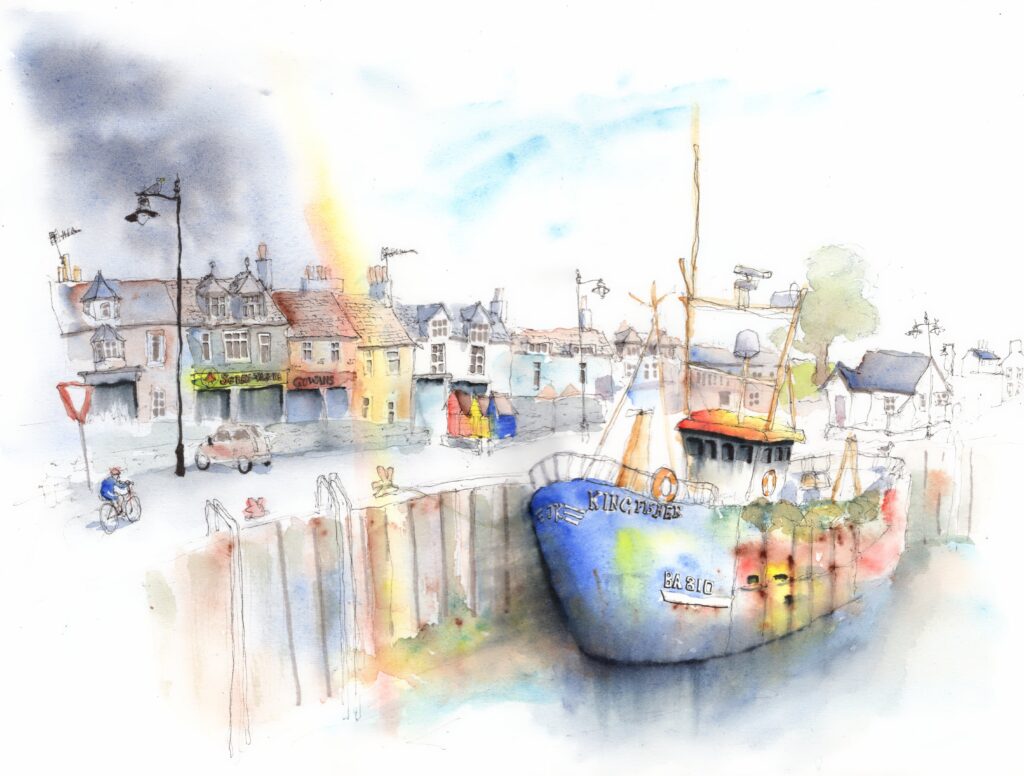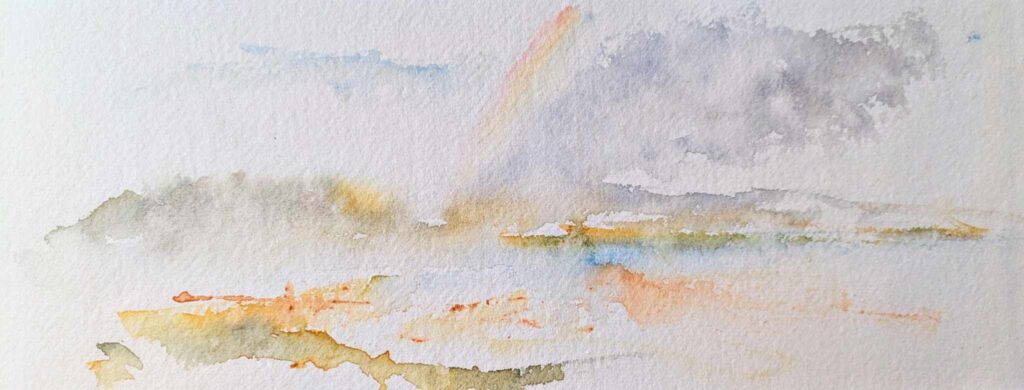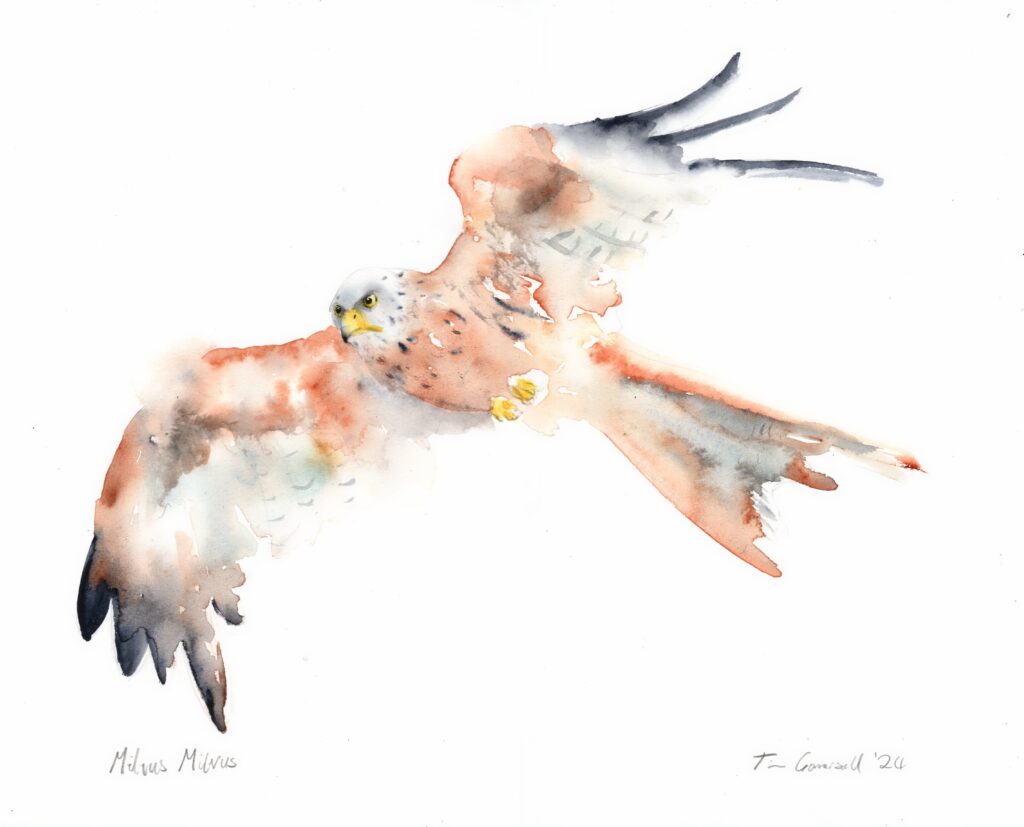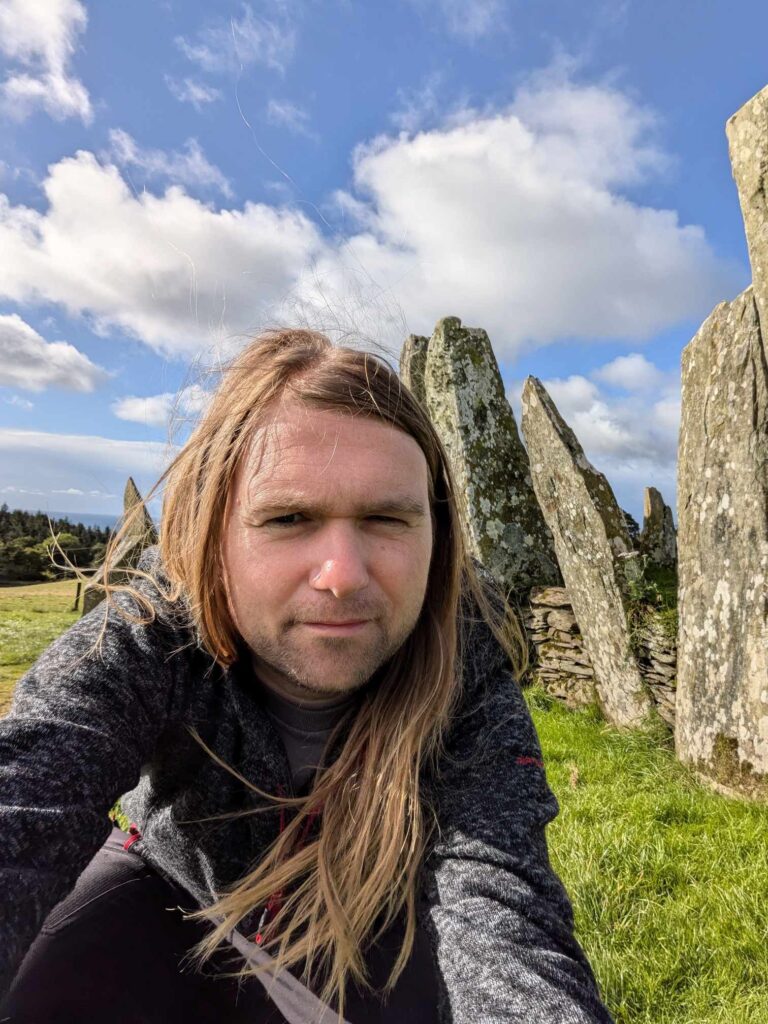On the magic of the Scottish Borders

Rainbow over Kirkcudbright
There’s something a bit special about the Scottish Borders. If you’ve met me in person, you’ll know how important Scotland is to my creative work, and I wanted to share a bit about that. Our latest trip was to Dumfries and Galloway, but, to be honest, the Scottish borders never held much interest for me. They probably should, because the concept of a border is quite strange. Take one step beyond the Welcome to Scotland sign and, hey presto – Scotland. And then put your foot back, and you’re back in England. Transitions between one thing and another are, in reality, a bit more complex, and borders are rarely as solid as we imagine. A few years back, I was into reading existential philosophy, and one thing I picked up was that even the border that we take the most for granted – between our own bodies and the rest of the world – is actually quite slippy. Think about it – we’re constantly taking in air and breathing back out. At what point does the air become a part of us, or no longer a part of us? This is just a long-winded way of saying that, if I’m going to Scotland, I want to be sure I’m well past the Scottish Borders, a place that’s Scotland beyond any doubt.
We stayed near a little coastal town named Kirkcudbright (pronounced, confusingly, Kir-Coo-Bree). This place bills itself as the Artists’ Town, and it is easy to see why many an artist has settled here to draw inspiration from sweeping estuaries, harbours, hills and old houses. We were watching gulls, curlew, and egrets on the sand as I settled on a rock to paint the vista. I commented to Nic how beautiful the rainbow was, forgetting that a rainbow in Scotland is almost always an omen of a coming downpour. Sure enough, the heavens opened, with the rainwater becoming part of my sketch and memory of the location. Back in town, we struggled to find a place to get a coffee and shelter from the rain – turns out Kirkcudbright wakes up a bit later than we do.

More Kirkcudbright rainbows. I love working like this – outside, feeling the elements as I work, trying to capture the atmosphere of a place with a few quick marks. Rain falling on the sketch is always a (partly unwelcome) bonus, adding unpredictability and an imprint of the place.
Perhaps it’s no surprise that a good deal of our chat, on roads and walks between places, was whether it “felt like Scotland”. To be sure, the vast, wild mountains and craggy Western isles were absent. Equally, you could drive for many miles without seeing another soul, and the evergreen trees seemed to grow that bit taller. One of the highlights, for me, was the Galloway forest park. This special place is the largest forest in Britain, a true dark skies wilderness, which has become a favourite of Aurora-watchers and solitude-seekers. As we entered the road into the park, a red deer leapt in front of us, disappearing into the thick forest as quickly as it had appeared. We were on our way to the Galloway red deer range itself, a place where you can get up close with the deer, just a couple of metres away at times.

After lunch one day, we visited the Galloway red kite feeding station. Now, don’t get me wrong, I do love a red kite. The problem is, coming from Yorkshire, we are in a red kite hotspot, where watching these magnificent creatures soaring overhead is a daily occurrence. In short I was unconvinced, dear reader, that a visit to the Red Kite Feeding Station would amount to much more than a walk down the street to buy a pint of milk. I’m pleased to say it blew me away to see fifty or sixty of these birds diving for their dinner in a stunning display of aerial acrobatics. There’s something for all the senses seeing a full flock of kites on the hunt – especially on a windy day with on-again, off-again rain, the birds diving through rainbows and clouds. I tried to sketch the moving shapes of the birds in the sky, while Nic managed, at last, to get a good red kite photo, from which I was able to make a painting to honour them.
The next day, we stopped off at Cairnholy, the remains of an ancient Celtic burial site. The view was well worth the mildly perilous drive, high on a hillside with vistas sweeping down to the sea. There’s something magical in knowing that this view has been seen, unchanged, by people across the ages – and it was certainly a fitting final resting place for those who once lived there. The stones, like Stonehenge, were arranged in such a way to suggest the ancients understood something that we’ve lost over time, a mystical structure of reality that they were able to tap into, so as to ease the transition between this world and the next. Then again, maybe they just thought the arrangement of the stones looked nice, which is also true enough.

The ancient stones of Cairnholy and a… um… “timeless” artist
